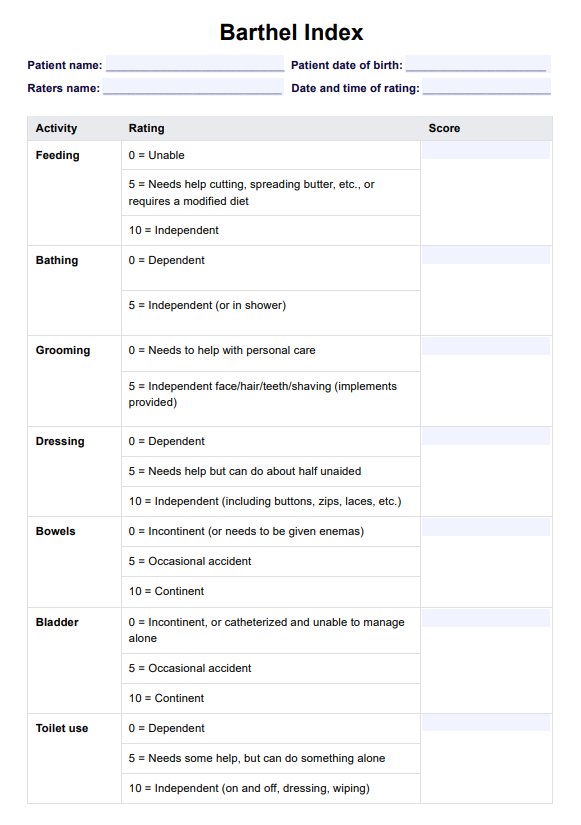Yes, the Barthel Index (BI) scoring can be considered relatively objective. The BI uses a standardized scoring system with clear criteria for each item, ranging from 0 (completely dependent) to 10 or 15 (completely independent). However, it is essential to note that the assessment still requires some subjective judgment, especially when observing the patient's performance or relying on self-report or caregiver input.

Barthel Index
Use the Barthel Index to determine functional independence to inform the treatment plan of patients struggling with ADLs.
Barthel Index Template
Commonly asked questions
The Barthel Index is widely used to assess functional independence in activities of daily living (ADLs) across a variety of clinical settings and patient populations, including stroke patients, patients with musculoskeletal disorders, brain injuries, mental disorders, and multiple sclerosis. This can also be helpful in hospital discharge planning and nursing home care.
Functional assessment tools like the Barthel Index (BI) are commonly used to monitor functional status in patients, especially those with chronic stroke. It is typically administered multiple times, such as at admission, during treatment, and at discharge, to track changes in functional abilities and determine the level of assistance required. Repeated use of the BI is reliable and responsive to changes in functional status, making it an effective tool for assessing progress over time. While a single administration of the BI can provide valuable insights, it is generally recommended to use it regularly to accurately monitor the patient's functional trajectory and guide treatment decisions.
EHR and practice management software
Get started for free
*No credit card required
Free
$0/usd
Unlimited clients
Telehealth
1GB of storage
Client portal text
Automated billing and online payments











